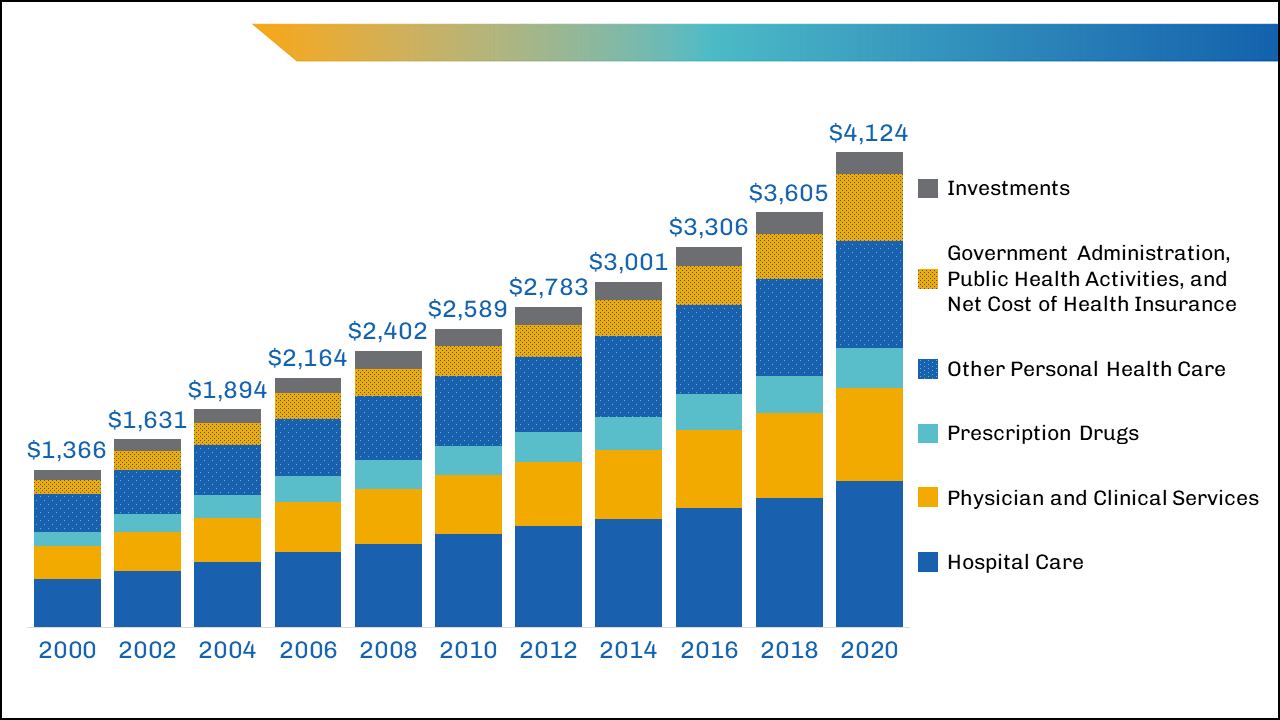The Importance of Healthcare RCM in Enhancing Capital and Effectiveness
The Importance of Healthcare RCM in Enhancing Capital and Effectiveness
Blog Article
A Comprehensive Overview on How Healthcare RCM Works to Streamline Billing and Collections
Navigating the intricacies of healthcare income cycle management (RCM) is crucial for companies intending to boost their invoicing and collections processes. The guide unloads the ins and outs of RCM, from person enrollment to balance dues administration, offering insights into enhancing each action. Integrating innovative technology and standard treatments can significantly lower case denials and increase repayment cycles. Yet, the real difficulty depends on seamlessly merging these components to enhance capital. As we discover the core parts and techniques that drive performance, one question continues to be: how can health care entities finest placement themselves to thrive monetarily in an ever-evolving market?
Comprehending Revenue Cycle Management
RCM is a vital management function that includes the entire monetary process of individual treatment, from the first appointment setting to the final repayment of the balance. It is a complicated procedure developed to identify, collect, and take care of the revenue from the services supplied to individuals.
The RCM process begins when a client routines a consultation and extends through the client's treatment journey, including payment and collections. An essential purpose is to decrease the time between giving a solution and receiving repayment, therefore enhancing the organization's financial health and wellness. RCM includes numerous functions such as individual enrollment, insurance verification, fee capture, coding, declares entry, payment uploading, and managing rejections and charms.
Key Components of RCM
In the world of Revenue Cycle Management (RCM), comprehending its crucial elements is basic to achieving economic effectiveness within healthcare companies. RCM is a thorough process that incorporates different stages, each crucial to making certain effective payment and collections. The main parts consist of individual registration, insurance verification, fee capture, coding, claim submission, repayment uploading, and receivable management.


As soon as coded, insurance claims are submitted to payers, where precision is vital to avoid delays or rejections - Healthcare RCM. Repayment uploading includes recording the obtained repayments, which permits for the reconciliation of accounts. Last but not least, receivables management concentrates on monitoring and dealing with unsettled claims, making sure timely follow-up and resolution
Each part of RCM is adjoined, and ineffectiveness in any type of component can interrupt the entire cycle. For that reason, grasping these aspects is necessary for healthcare suppliers to maximize earnings and boost their financial health.
Strategies for Reliable Billing

Standardizing payment procedures throughout the company is an additional essential approach. Developing clear standards for documents, coding, and submission aids keep uniformity and compliance with regulative needs. Training team consistently on these treatments guarantees everyone is current with the most recent modifications in invoicing codes and payer plans.
Precise charge capture is important in preventing earnings leak. Applying normal audits and surveillance systems enables the identification and modification of inconsistencies before they affect revenue. In addition, preserving open lines of communication with payers aids to swiftly fix any conflicts or misunderstandings that might arise.

Finally, interesting individuals early in the billing process by providing clear quotes and academic materials about their economic responsibilities can substantially minimize confusion and enhance payment timeliness. These strategies jointly contribute to a much more economically healthy and efficient invoicing system.
Enhancing Collections Procedures
A robust collections procedure is important for preserving economic stability within health care companies. Given the intricacies of clinical invoicing and the selection of payer needs, improving the collections procedure includes implementing critical measures that make sure precise and prompt repayment of solutions rendered. Central to this is the use of modern technology to automate and simplify procedures, enhancing and reducing hand-operated errors effectiveness. Automation devices can assist in tracking case standings, sending timely reminders to individuals, and managing rejections better.
Training personnel to recognize the nuances of insurance plan and payment codes is equally vital. This understanding encourages them to deal with payment discrepancies swiftly and communicate effectively with clients concerning their financial responsibilities. Moreover, clear and transparent person interactions are critical. Giving in-depth explanations of costs and supplying adaptable settlement strategies can increase person fulfillment and prompt repayments.
Normal audits of the collections process need to blog here be performed to recognize areas for renovation and make certain compliance with regulations. By analyzing data, healthcare companies can determine fads, anticipate possible concerns, and adjust methods accordingly (Healthcare RCM). Inevitably, a well-enhanced collections procedure not just sustains monetary health and wellness but additionally adds to an extra seamless experience for clients and personnel alike
Optimizing Income Streams
Structure upon the structure of a solid collections process, health care companies can better reinforce their economic stability by tactically maximizing earnings streams. This entails a multi-faceted strategy, starting with a thorough evaluation of existing income sources to identify inadequacies and locations for development. Utilizing sophisticated data analytics devices enables companies to obtain insights right into payer mix, individual demographics, and service use patterns, permitting for data-driven choices that enhance profits capture.
Implementing automated billing systems can considerably reduce errors and quicken claims processing, guaranteeing that income is collected more successfully. Furthermore, maximizing payer contracts through regular settlements can improve repayment rates and terms, directly influencing the lower line. Expanding solution offerings, such as incorporating telehealth or health care, can likewise draw in a wider patient base, hence raising earnings potential.
Another crucial part is boosting client engagement and contentment, as satisfied patients are most likely to adhere to therapy plans and make prompt settlements. Using versatile repayment alternatives and transparent payment methods can improve collections and foster patient loyalty. Healthcare RCM. By taking on these techniques, healthcare organizations can develop click for source a more durable monetary framework, ensuring sustained development and stability in an ever-changing sector landscape
Final Thought
Finally, healthcare Profits Cycle Monitoring (RCM) plays a crucial function in enhancing invoicing and collections processes by integrating essential parts such as individual enrollment, insurance verification, fee capture, coding, claims entry, and receivable administration. By using innovative modern technology, systematizing procedures, and promoting patient engagement, medical care service providers can dramatically decrease insurance claim rejections, speed up payment cycles, and boost money flow. This extensive method to RCM inevitably results in boosted financial efficiency and sustainability for health care companies.
The RCM procedure starts when a patient timetables an appointment and prolongs through the patient's treatment trip, including useful site payment and collections.One more essential part is enhancing patient involvement and complete satisfaction, as pleased clients are more most likely to adhere to treatment plans and make prompt repayments. Using flexible repayment choices and transparent invoicing practices can improve collections and foster individual commitment.In final thought, health care Earnings Cycle Monitoring (RCM) plays a vital duty in enhancing payment and collections processes by integrating essential elements such as client registration, insurance policy confirmation, cost capture, coding, declares entry, and accounts receivable administration. By using sophisticated technology, systematizing treatments, and fostering individual interaction, health care carriers can significantly lower case denials, speed up repayment cycles, and boost money flow.
Report this page